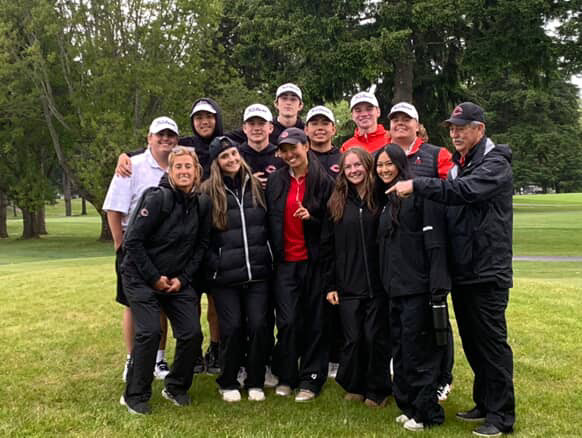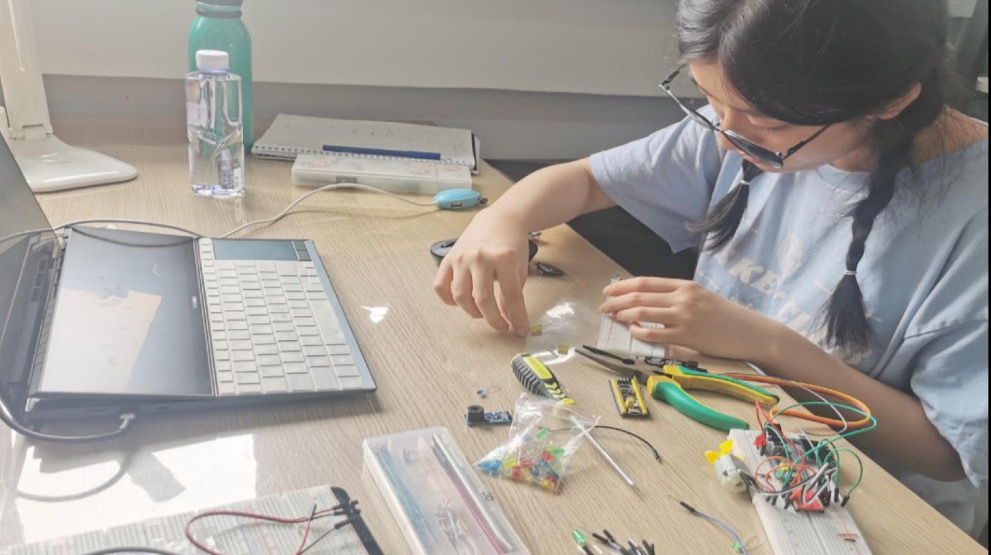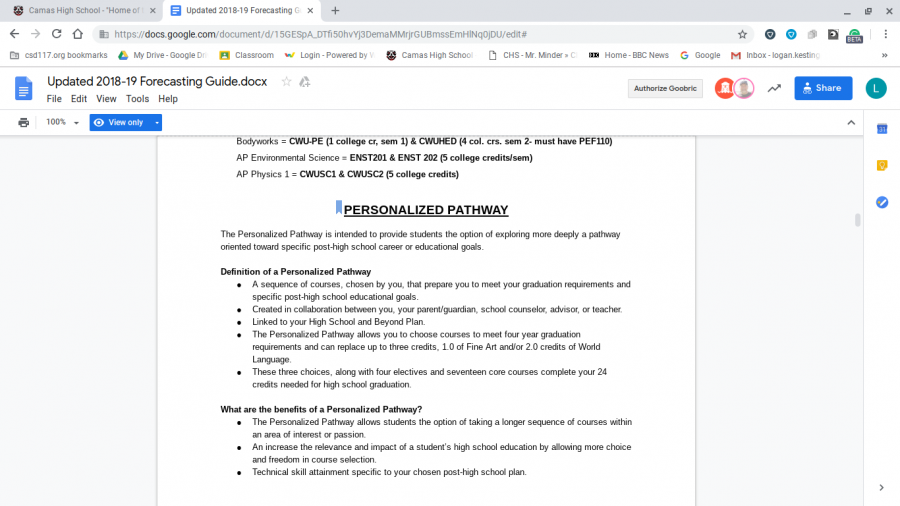 The curriculum at Camas may suit some, but for those who wish for something different, there are ways those students can take specific classes that lead them directly to their careers. A Personal Pathway is an option granted to students who know where they hope to go and desire to push towards their goals right away.
The curriculum at Camas may suit some, but for those who wish for something different, there are ways those students can take specific classes that lead them directly to their careers. A Personal Pathway is an option granted to students who know where they hope to go and desire to push towards their goals right away.
Bre-Ann Richardson, a counselor at CHS, discusses the finer details of the Personal Pathway. There are many benefits to a personal pathway. At its heart, it is meant to allow freedom in the pathway students use toward graduation,” Richardson explains; “The hope is that students are able to take courses that help with their post-high school plans.”
There are two ways that personalized pathways affect the credits required for graduation: You can either take two years of a world language (which is required for most universities) or one art credit. The state encourages students to take two art credits because “one is required for graduation, and the other can be an art class, or it can also be a PPR [Personal Pathway Requirement] class”, reasons Richardson. This adds a whole new level of freedom for students in the forecasting process.
Mrs. Richardson also asks students to first forecast for the classes they mandatorily need to graduate so counselors don’t have to go back and modify schedules to meet requirements. She also requests that students “input three back-up electives in the event their schedule will not work with the first classes they selected.”
For those curious of how available this opportunity is in terms of open courses and how quickly they fill up, Richardson explains that “As long as students forecast during the week of March 25th they will be in the general pool of students that are placed into the requested classes.” Towards the end of the school year, those course requests are reviewed and courses are then created based on the number of students that forecasted into each class. The final step is pairing teachers with those courses and class periods. She emphasizes that it is “very important for all students to forecast during the week of forecasting.” If students fail to do so, they are not guaranteed to be fit into the classes they request.
Counselors try to honor student scheduling requests, but due to the size of the school, they sometimes interfere with core classes. In this case, Mrs. Richardson would “go in and clean up schedules – input courses that a student might need for graduation or input an alternate.”
Richardson added in closing, “[Counselors] want to honor each student’s path and life goal, which makes it somewhat difficult to be prescriptive to an exact PPR answer. We want students to be prepared for what comes after CHS… and we want them to feel like they have had opportunities in high school to take classes that match them and their interest areas. OSPI allows each student those three extra credits (1 art and 2 world language that can be traded out) to do this which is incredibly helpful.”
Students interested in the personal pathway opportunity should meet with their counselors this week to learn more about how they can use one to reach their goals. Remember: forecasting begins in two weeks!


































